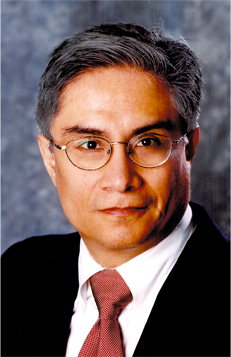j-curve: noun: ʤeɪ-kʰɚv or ˈjā.kərv
An abstract mathematical term which describes a logistical s-path of initial negative values smoothly becoming increasingly positive. It is characterized by an initial concave path followed by a convex path. In investments and finance, a j-curve demonstrates the phenomenon that in a long term investment negative returns typically occur before positive returns.
The Firm
J-Curve Advisors (J-Curve), founded by industry veteran Jesse Reyes, is an information, research and advisory firm formed to guide private equity and venture capital firms in navigating the complex quantitative and analytical environment LPs apply to their funds and portfolios.
J-Curve is uniquely qualified to help GPs with this navigation, as the founder has pioneered or contributed to many of the analytical techniques, methodologies and concepts in mainstream use today by Limited Partners, General Partners and the private equity industry at large. This experience coupled with private placement experience gained in Bear Stearns Private Funds group, provides a unique skill set to advise GPs in assessing their performance and developing strategies for differentiation.
Philosophy
Over the past decade as the private equity industry has become a mainstream asset class the private equity industry has evolved and adopted increasingly quantitative and rigorous analytical techniques in selecting their investments and managing their portfolios. The most recent financial crisis added its own challenges to manager selection and portfolio management. A myriad of academic and practitioner-based information resources, techniques and methodologies have emerged in recent years to address these challenges. General Partners are often at a loss at how to effective use these rapidly-evolving tools and concepts in meeting their investor’s needs.
J-curve believes that these information sources, techniques and methodologies will continue to be complex and noisy. J-Curve provides the industry with insight, intelligence and advisory services to navigate these confusing waters.
Limited Partners have adopted progressively rigorous tools to analyze fund performance and attribution. General Partners need to be equally armed in being able to meet this ever more analytically-rigorous gauntlet imposed by LPs. J-Curve can advise General Partners in evaluating both classical and novel analytical frameworks in use today.
We feel there are six quantitative factors which are key to assessing successful private equity investments:
- Market position
- Returns
- Performance
- Attribution
- Risk
- Liquidity
J-curve provides tools, commentary, education, analysis and advisory services to help GPs assess these factors for their own funds.
Talent
J-curve was founded by Jesse Reyes, who is regarded as one of the leading experts in private equity and venture capital research. Jesse’s primary focus is on performance measurement and quantitative analysis of the venture capital and private equity industry. Over the last twenty five years he has pioneered many of the performance benchmarking methodologies, analytical tools and research methods now standard and mainstream in the private equity industry. In addition, his experience as a managing director in Bear Stearns Private Funds group provides real-world experience in private equity fundraising.
As former global head of research at Thomson Venture Economics (now Thomson-Reuters), he led the development of private equity benchmarking and research products which under his aegis became the first and leading fund performance measurement tools used by LPs and GPs alike.
He was formerly a Managing Director in Bear Stearns Private Funds Group providing due diligence, fund mandate management, and distribution services to GPs. Prior to joining Bear Stearns, he was a managing partner with Crane Capital Associates which was acquired by Bear Stearns in 2007.
Mr. Reyes serves as Chairman of the CFA institute’s Global Investment Performance Standards’ (GIPS) committees on performance presentation standards representing private equity investing.
He serves on the Board of Advisors for the Thunderbird University Private Equity Center (“TPEC”). He is a lecturer at Cornell’s Johnson Graduate School of Management where he teaches classes on topics in institutional private equity investing and he is a member of the advisory board of the Private Capital Research Institute.
He is a member of the IRR Study Group which is creating guidance and best practices in the application of the IRR and related performance metrics to various investment scenarios.
Mr. Reyes was a co-founder of QuartileOne which focused on providing enhanced private equity performance analytics using a proprietary consortium of private equity providers.
He is a former member of the Educational Board of the Kauffman Fellows program.
Before joining Venture Economics, he was a visiting assistant professor at Texas Tech University teaching courses in futures, finance and applied economics. While at Texas Tech he served as a consultant to US AID projects specializing in economic and financial analysis of micro-business development and financial markets development projects in Central America.
He co-founded Texas-based Decision Research Associates, a software firm specializing in oil and gas partnership accounting and medical office management.
His background includes a Bachelor of Science in agricultural economics and an M.B.A. focused on finance and statistics, both from Texas Tech University as well as graduate studies in the department of economics at Harvard University.
A farmboy native of Ralls Texas, Mr. Reyes currently resides in Summit, NJ.

Jesse Reyes, Managing Director






